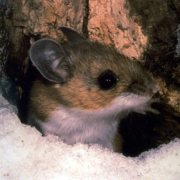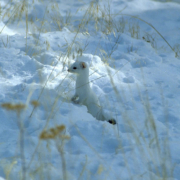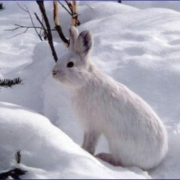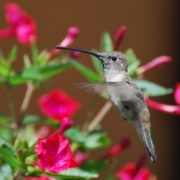6 Tricks for Better Species Identification
Learning how to identify plants and animals–especially when you’re first starting out with a conservation project—can be seem pretty daunting at first. Once you get the hang of it, though, I promise it gets much easier! Here’s a list of six tricks I use all the time when I’m trying to identify wildlife in the field.
- First, get yourself some handy identification tools.
There are so many species, how could one possibly learn what they all look like? Answer – you don’t. Instead, you learn how to use tools like field guides that will help you figure out which species you’re looking at. Field guides are generally designed to be small enough to carry around while also providing an identification tips for a group of species like birds. There are also numerous apps for your smartphone that can supplement or replace field guides, like Audubon’s bird guide app and LeafSnap.
- Take photos!
Take photos of the animals and plants you see, especially if you aren’t sure what species it is. You can then examine the photo in detail and zoom in on your computer’s monitor, and take as much time as you need to compare it to books and online guides. You can also submit photos to a variety of experts online who can help with difficult identifications, such as BugGuide.net or a local naturalist.
- Get expert help in the field.
In addition to getting help with identifying species you photographed, it can also be advantageous to have one or more experts with you in the field while you are monitoring your project. They can give you hands-on training in implementing a monitoring technique for your project as well as with in-the-field identification.
- Learn how to “break it down” into manageable parts.
One of the best ways to keep from feeling overwhelmed by everything going on with the way a species looks or sounds is learning how to “break down” each plant or animal into a bunch of manageable “parts” that will help you identify it. So if you’re trying to figure out which bird you’re seeing, you can break down the visual observation into things like relative size, bill length, bill shape, tail shape, colors on various parts of the body, and distinctive markings. Animal songs and calls can be similarly broken down into things like pitch, rhythm, melody and harmonics, complexity, tone, timbre, and mnemonic association.
- Use all of your senses to observe plants and animals.
The most common way to identify plants and animals is by sight, of course but your other senses can help you too. Many animals sing, call, or make other noises, and with some practice it can be easy to distinguish many of the common bird songs, frog and mammal calls, and such. Some species have a distinctive smell, such the lemony odor released by lemon beebalm when its leaves are crushed, or that very distinctively noxious odor when a skunk sprays to protect itself. Touch and taste can also be useful for helping identify certain plants, such as rough tree bark or minty-tasting leaves (taste should be used with lots of caution, however, as many wild plants can be poisonous!)
- Consider your location.
Remember, species occur within specific ranges and habitat types. The species you might find when you’re out on your company’s land will therefore depend a great deal on where you are in the world and what habitat you’re looking at. You wouldn’t find a tropical marsh bird in a temperate desert, now would you?
I hope these tricks give you the confidence you need to go out there and try your hand at species ID!









